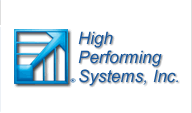Good relationships are good for business. Using Emotional Intelligence is like a fast track to getting along better with employees, co-workers and customers. This article is part of a series that highlights the different Subscales of Emotional Intelligence (EI) as measured by the EQ-i 2.0 and includes coaching tips for practical application and development. These articles are based on the EQ-i® model of EI published by MHS and on the work of Dr. Reuven Bar-On.
Debra Cannarella, High Performing Systems, Inc.
During a coaching session with a CEO on leading his business, we had a conversation about “Reality.” His concept of organizational success was far from realistic: it was a lofty vision of how he wanted things to be. Our client was one who dreamed so big that he disconnected himself from the real world. Using the concept of Emotional Intelligence (EI), we helped our client set more achievable goals and see them to completion.
Emotional Intelligence is defined by Dr. Dick Thompson, President and CEO of High Performing Systems, Inc., as a person’s innate ability to perceive and manage his/her own emotions in a manner that results in successful interactions with the environment and, if others are present, to also perceive and manage emotions in a manner that results in successful interpersonal interactions. There are several components of Emotional Intelligence, as measured by the EQ-i 2.0 (see graphic, below), and one is Reality Testing—the ability to focus on the facts, be objective and see the way things really are while understanding how one’s own bias could affect judgment.
We administered the EQ-i to our client and gave him feedback on his EI strengths and weaknesses. From there, we created a development plan to contain his weak areas—Reality Testing in particular—while enhancing his strengths. It took several coaching sessions before he was able to alter his mindset and pragmatically evaluate his goals. By applying a realistic lens to his outlook, all his big dreams and impossible ideals gave way to a clear vision. Understanding Reality Testing helped our client become grounded.
If Reality Testing is an area of need for your clients, here are four coaching techniques to improve this skill, including how we applied them to this specific situation. Use these tips to keep your clients focused, objective and tuned in to the real world.
- Raise Self-Awareness
- Know your biases
- Know how emotions affect your perceptions
- Be aware of any previous experience(s) similar to the one you are currently in
By encouraging our client to look deeper into his own emotions, we helped him gain a better understanding of how his unconscious biases were indeed creating unrealistic views about his organization. He saw how emotions affected his perception, which hindered the company’s ability to meet goals and expectations.
- Collect objective data from multiple sources
- Make a Pro-Con list
- Create working hypotheses (not conclusions)
We tasked our client with gathering qualitative and quantitative data through interviews with previous customers and staff, reviewing documents and reports and making real-time observations within the company. This expanded his awareness and allowed him to see pros and cons based on objective information. The process required him to create working hypotheses based on empirical data prior to making any changes to the company’s vision and goals.
- Get other people’s perspective of the situation
- Get opposing views
- Determine the emotions involved in the situation
Filtering the world through our own lens restricts us, yet being able to see through the lenses of others provides a broader, more comprehensive view. Our client learned the importance of listening to other perspectives and how those views could help him understand situational emotions. Since emotions impact perception, it is critical to recognize how they affect a person’s objectivity.
- Watch out for “All or None” thinking
- Don’t over-generalize
- Avoid stereotyping
Our client had a tendency to over-generalize past successes to justify his unrealistic plans. As he decided on future goals, we coached him on how to apply analytical techniques to avoid errors in thinking.
By using these rational techniques, our client found the right path to turn a dream into what is now a successful reality. His business excels, its leadership team and whole organization meeting both short- and long-term goals.
.jpg)
EQ-i 2.0 Model
The EQ-i 2.0—the most scientifically-validated EI assessment available—measures the interaction between a person and his/her environment. The power of the instrument is in how the 15 Subscales pinpoint a person’s behaviors and the motivations behind those behaviors.
For a printable copy of this article, go here.
_____________________________________
High Performing Systems, Inc., is nationally recognized for commitment and professional impact in cultivating teams, organizations and leaders to improve performance. HPS has provided leader development, assessments, consulting and professional development training since 1984. Contact HPS by email at info@hpsys.com.
High Performing Systems is an award-winning world leader in EQ-i 2.0® certification (since 2005), EI training and implementation, leader coaching and success profiles. Call 706-769-5836 to talk with an experienced EI practitioner about your organization's specific needs. |
